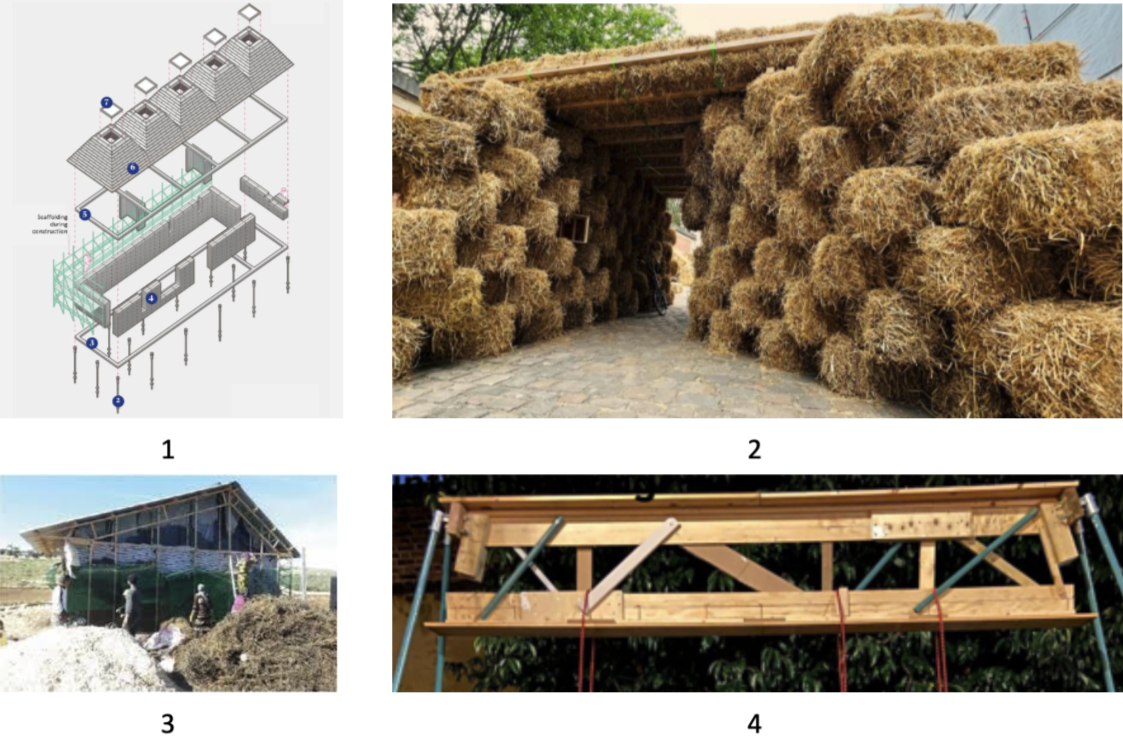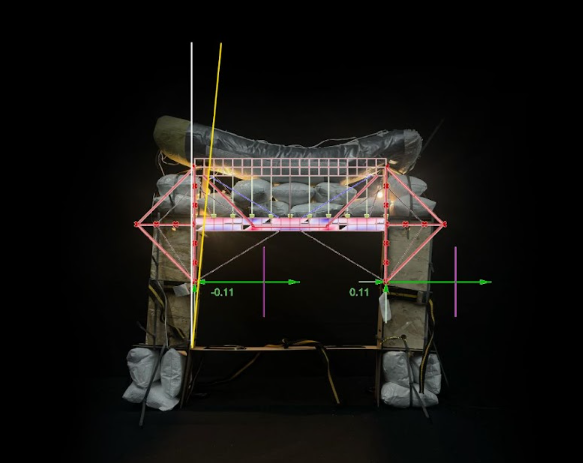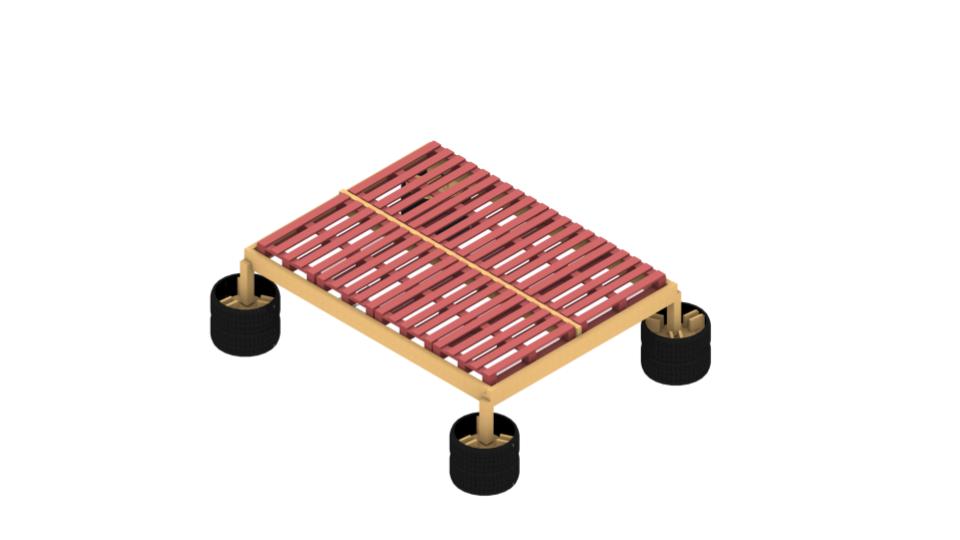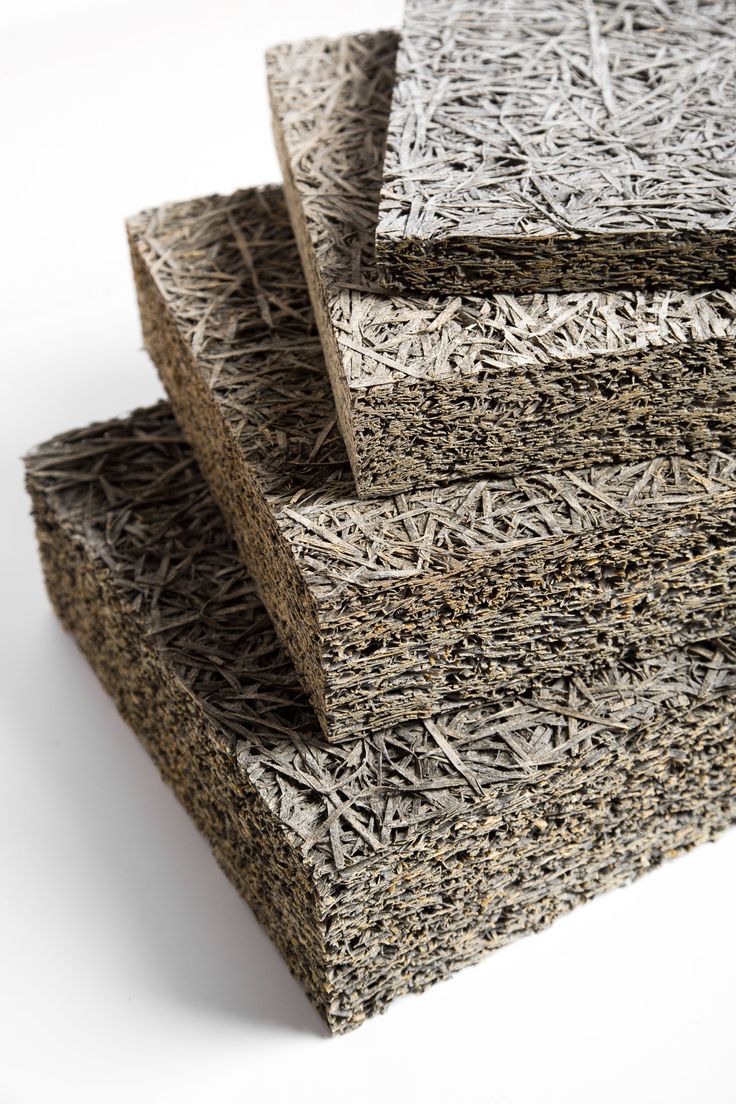
Credits: 1. Structural Wardrobe; 2. Haybale structures IASS_2024_Paper_170.pdf; 3. Nasma A Sustanable Refugee School Prototype; 4. Reused elements creating spanning truss
This year we will explore four exciting sustainable driven structural principles:
- Structural wardrobe (to allow for soft non structural experimental materials to be used in the wall
- Reused material Lintel spanning over opening in non structural insulating wall
- A low-cost high comfort solution for an integrated structural insulating wall
- A spanning roof (on the two walls) using reused timber elements to make beams / trusses
We intend to work with reused or borrowed materials to create the structural elements and also the walls where possible. We intend to follow Prouve’s lead in creating an alphabet of systems that bound structural and environmental principles and are based on low cost (both in finance as carbon) elements (Refer to the Alphabet of elements).
A stock-based design approach
Structurally we will explore how to use Design through reuse, Where the design process starts from assessing what we have in stock and finding the best locations and opportunities of the materials within a to be defined system. This is also called a stock based design process.
We aim to identify new circular opportunities in structural design, and through alternative environmental and structural driven topologies aim to minimize the environmental impacts.
Donations
It is exciting to work with odd cuts, old pavilion structures and left over materials from Valldaura.
Workshop 1: An alphabet of STR + ENV systems
We will be making beams, strategising reusing of elements, defining capacity and connections, and exploring the 4 typologies from a structural as well as a thermal performance point of view. We will explore how to give agency to designers for reuse of materials to become part of structural systems, including safety factors / special DIY connections etc.
We will conclude with 4 1:1 physical prototypes alongside global structural and thermal digital understanding of the performance and a protocol for reuse. Establishing calibrated digital and physical understanding of fabricated structures.
Workshop 2: The Demonstrator
We will bring together the 4 systems into a demonstrator. A collective showcase of the physical integration of the systems, the background of structural principles and variations (systems thinking) and the associated impact of the systems compared to the current status quo.
Learning Objectives
At course completion the student will:
- Understand the fundamentals of structural design through physical testing and computational structural analysis with Karamba;
- Understand how to set up an analysis, strategically change parameters and understand and respond to structural analysis results. i.e. apply feedback loops;
- Relate structural design to construction and fabrication impacts. Translate digital analysis and structural performance to material design constructs;
- Relate structural principles with 1:1 construction methods to existing site conditions, both in terms of the physical building performance, as well as the climate aspects;
- Understand the relations between architectural potential and structural aspects in a holistic way.









